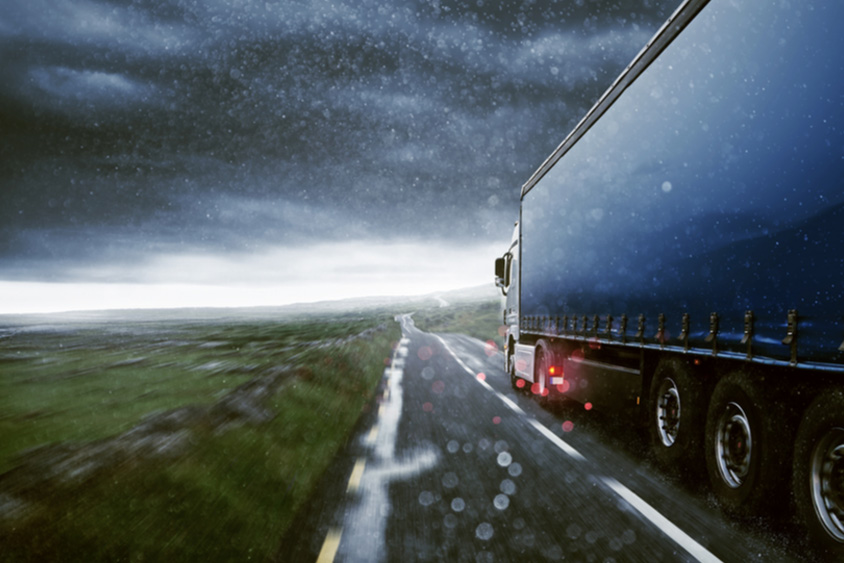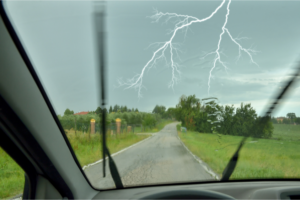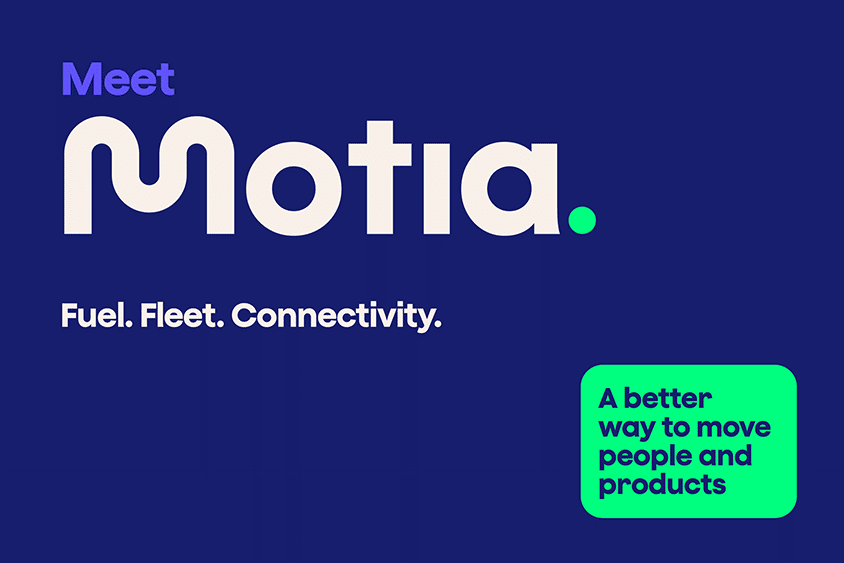Top tips for driving in storms
Written by: Simon Pavey, Last updated:11th March 2022

The UK was recently hit by a barrage of intense weather with the arrival of Storm Dudley and Storm Eunice. These storms saw thousands of people left without power. As many trees were torn from the ground and buildings damaged, these storms also sadly claimed several lives.
The reason we’re writing this article is because, unfortunately, the frequency of storms like this in the UK is only likely to increase. In our warming climate, more extreme weather conditions are likely to become commonplace.
Therefore, drivers should have a good understanding of what they can do to stay safe whilst driving in storms. Whilst most advice would likely tell you not to drive during storms, this isn’t always possible. If your business relies on a fleet of vehicles, you can’t just shut down your operations when there’s a storm!
So, here are our tips for driving in storms.
Keep speed to a minimum
Of course, you need to maintain a slower speed than normal in extreme weather. If there’s a storm, you’re likely to be driving in heavy rain and strong winds. The rain can loosen the grip between your tires and the road and double the amount of time it takes for your vehicle to come to a stop when braking.
As well as driving slowly, ensure you keep a good distance between yourself and other vehicles. You’ll have more time to react if you need to brake, and the winds might cause other vehicles to move unpredictably.
Speaking of which, make sure you keep a firm grip on the steering wheel; strong winds can send you off course and you’ll need both hands to maintain control.
Plan your route
Before driving in a storm, it’s vital you plan your route. You’ll need to check for road closures. Falling trees, branches, and debris can cause roads to be blocked off; if you are able to check this beforehand, you might be able to avoid delays by choosing a different route.
If you can avoid smaller roads as well, you should do so. Smaller roads are more likely to be closed because of debris in a storm.
Don’t drive through a flood
Storms tend to bring floods, and roads can become submerged under the water. Possibly the most important advice we can give is this – do not drive through a flood.
The MET Office states that drivers attempting to navigate a flooded road is the number 1 cause of death in storms.
You might come across a road that is submerged and think “that isn’t too deep” and continue driving. However, a stream of water that is just 30cm deep can lift your vehicle, causing you to float and be dragged along with the current of water.
Additionally, it only takes a tiny amount of water in your engine to cause immense damage. This means expensive and time-consuming maintenance may have to take place, which can be avoided if drivers simply turn away from the flood and find another route!
What if my car is struck by lightning?
This is very unlikely to happen, but it is possible, especially when driving on higher plains. In most instances, you’re actually quite safe inside your vehicle.
If lightning were to hit your car, the metal frame allows the electricity to travel to the ground where it is dispersed. However, if this does happen, try not to touch any of the metal components of your vehicle until the storm has passed.
However, if you are driving a convertible or soft-top, you are slightly less safe. The lack of metal roof means that the lightning might not hit a part of your vehicle that conducts the electricity allowing it to be dispersed. Therefore, do not drive such a vehicle during a thunderstorm if possible, as the lives of those inside could be at risk.
If you can avoid driving, do so!
As mentioned earlier, this isn’t possible for many businesses. However, your drivers’ safety is always more important than keeping operations going. If the weather looks like it is life-threatening, consider halting your business’ operations for that day.
If driving is an absolute necessity though, remember the above tips – they could make a huge difference when driving in storms!
How can Fuel Card Services help?
Obviously, we can’t control the weather, and can’t make driving through storms any easier! However, we can help ensure your business is prepared.
We offer a telematics service that can help your business plan routes and promote driver safety. With Tele-Gence, you’ll be able to track your fleet’s drivers and ensure they’re taking the best possible route as well as keeping their speed down during arduous weather conditions.
Also, we can help you keep your vehicles well maintained so that when the storms come, your drivers can rest easy in the knowledge that their vehicles are safe! With MyService.Expert, you’ll get pre-negotiated rates at thousands of main dealers across the country, and it’s also pay-as-you go!
MyDriveSafe.Expert is our safety check app. Your drivers can tick off a checklist as they carry out safety checks. This means that they’ll know if there are any issues with the vehicle before hitting the road. This knowledge could save their lives if a dangerous storm were to hit!
Get in touch with our experts today and see what we could do to help your fleets prepare for all eventualities!
back



